Changing ukulele strings is an essential skill for any player. Follow our step-by-step guide so you know what to do to keep your uke sounding its best.
Written by John Allnutt / Published October 4, 2024
Last updated: September 29, 2024
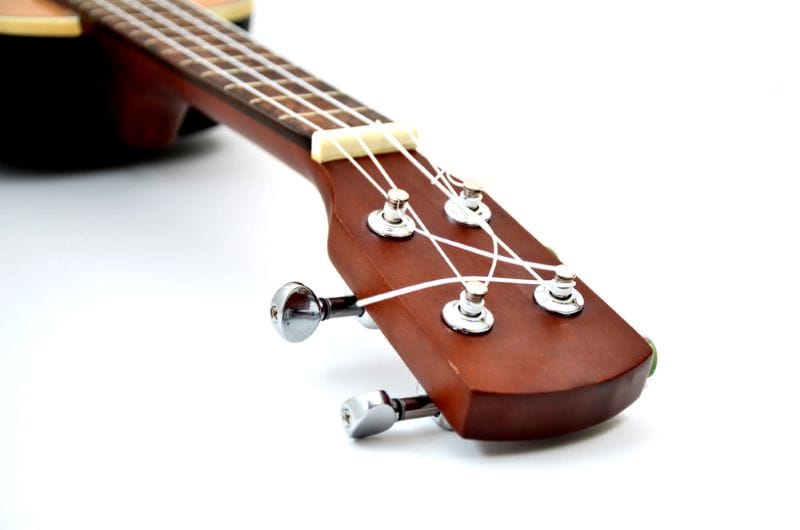
So, you have had your ukulele for at least a year and maybe you feel like the strings are not giving you as much sound as they used to. Or perhaps, the fretboard of your ukulele is looking a bit dirty. It may be time to change the strings on your ukulele. Changing strings on a ukulele is an essential skill to ensure that your ukulele is sounding great. It also can provide an opportunity to reconnect with and care for your instrument.
READ MORE: How to tune your ukulele
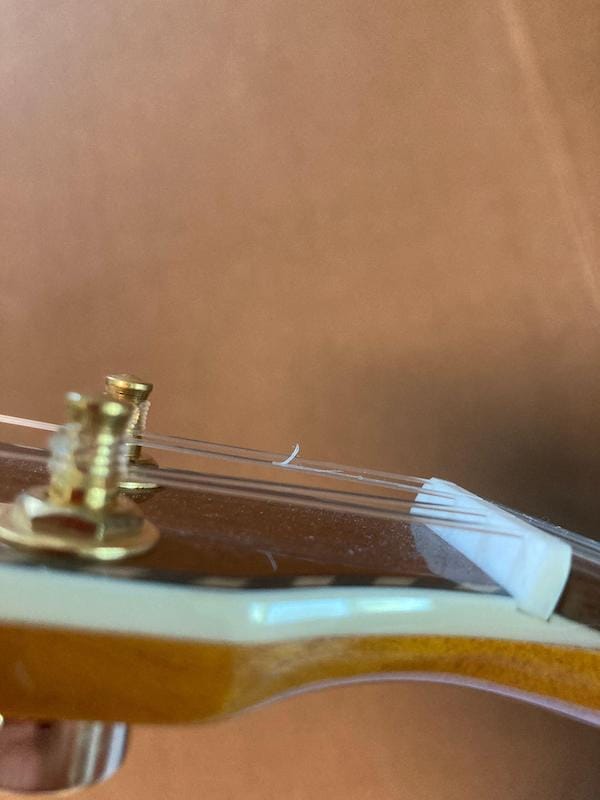
Useful Tools and Equipment
Changing strings is a pretty easy process but you do want to make sure that you have the right tools for the job. Make sure that you have a level surface with something soft underneath to make sure you do not scratch your instrument. Having a string winder and cutter can be very useful and will save you time (and a sore wrist). A microfiber towel is especially useful to wipe the fretboard once a string has been removed. To keep things tidy I also recommend having some nail clippers around to trim the remaining exposed string.
Choosing the Right Strings for Your Ukulele
The first step for a string change is that you want to make sure that you purchase a new set of strings. The easiest way to go about this is make sure that you purchase strings that fit your instrument. The most standard set of ukulele strings are the Aquila Nylgut strings. When you go to buy them make sure they say either – soprano, concert, tenor, or baritone strings. These strings are low maintenance and sound pretty good right from the start. All of the strings mentioned here at the time of this publication should be around $10 or less (not including Seaguar).
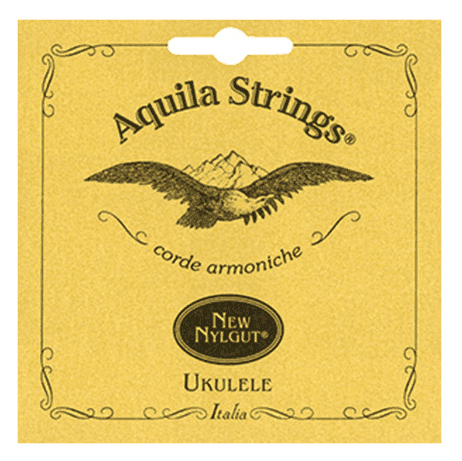
If you would like to opt for something slightly different with a more “vintage” tone, I recommend trying out the Aquila Red series strings. These strings have an interesting, bright tone without sounding too “plastic.” The strings are impregnated with copper powder which grips to your fingers a bit more to create a truly unique sound.
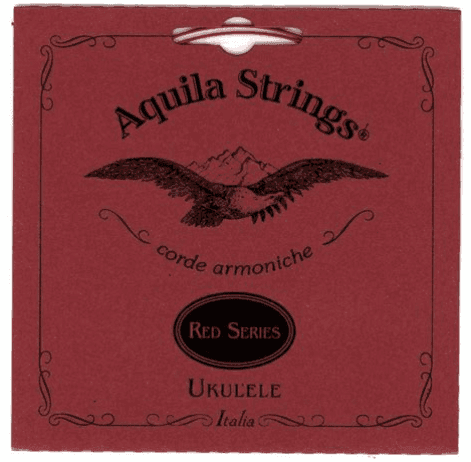
A unique option for those with solid wood top ukuleles, but with lots of initial cost, are high quality fluorocarbon fishing line “strings”. Believe it or not, some fishing line manufacturers produce ukulele strings for small companies due to the higher demand of fishing line over ukulele strings. If you do decide to go with this option, I recommend the Seaguar Premium Japanese fishing line. I am planning to write about this in a future article as this type of string responds a bit differently than your standard ukulele string.
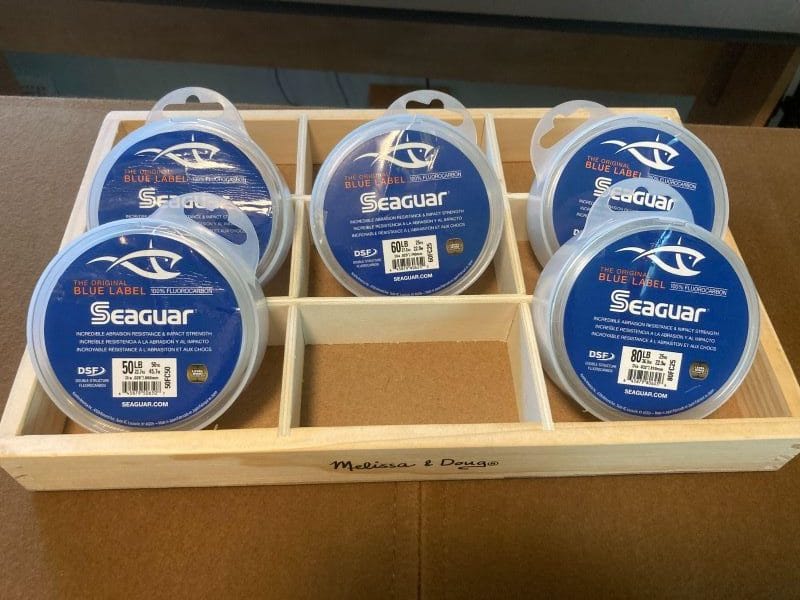
How to Change Your Ukulele Strings: Step-By-Step
1. Removing Your Old Strings
The first step to changing strings is to loosen one of your old strings as much as possible (let’s say it’s the 4th string or the g string to start with). When it doesn’t seem like it will loosen much more, take your string winder/cutter or nail clippers and snip it right in the middle of the string. Dispose of the used string.
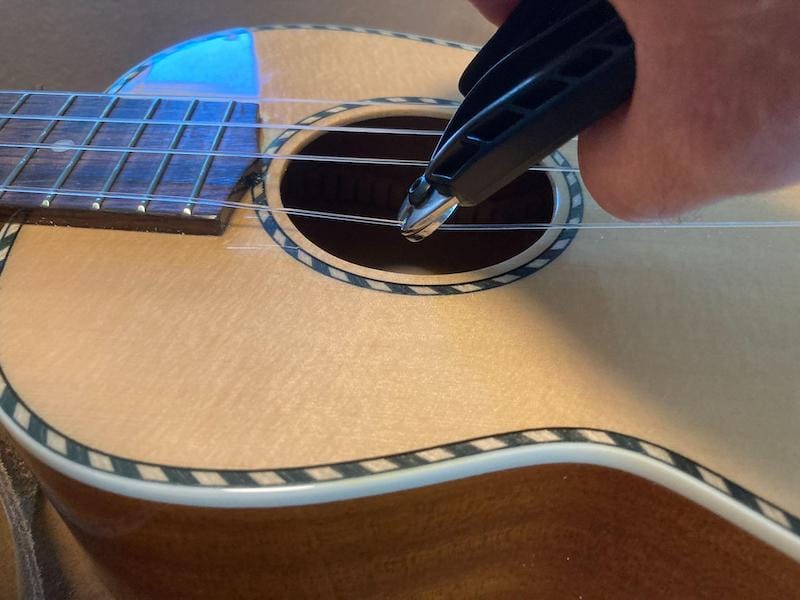
2. Wiping Down the Fretboard
Now, you have an opportunity to clean the fretboard and strumming area where the string has been removed. Take your microfiber towel and wipe this area clean of dust and other debris. If you need to clean a little more due to sweat or other deposits on the ukulele, add a little bit of water to the microfiber towel to help clean the ukulele.
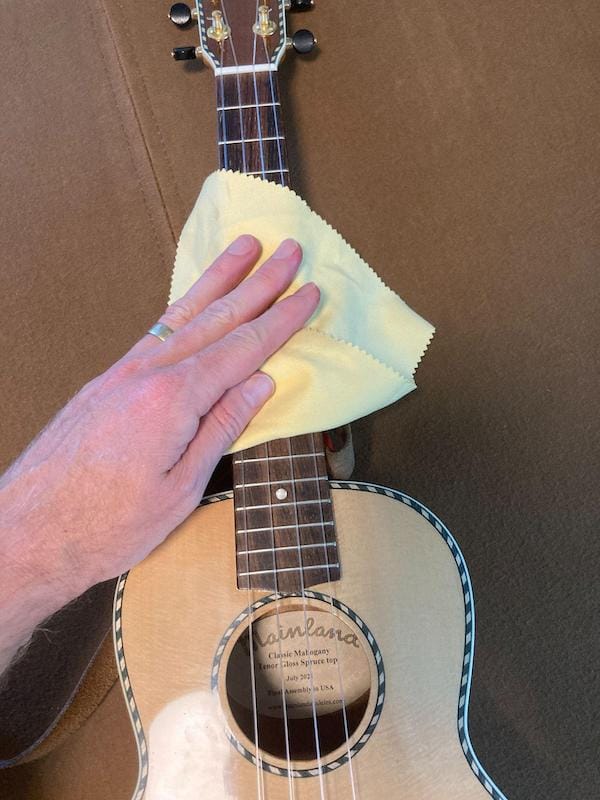
3. Putting on New Strings
In the new string package, you will see your strings labeled either with the name of the string (g in this case) or it will be color coded (especially with the Aquila strings). In this article, I will show you how to change strings on a slotted bridge but there are other types of ukulele bridges as well, including but not limited to; tie-bar bridges and pin bridges.
1. Take out the g string and in this case, make a knot on the end of one of the strings.
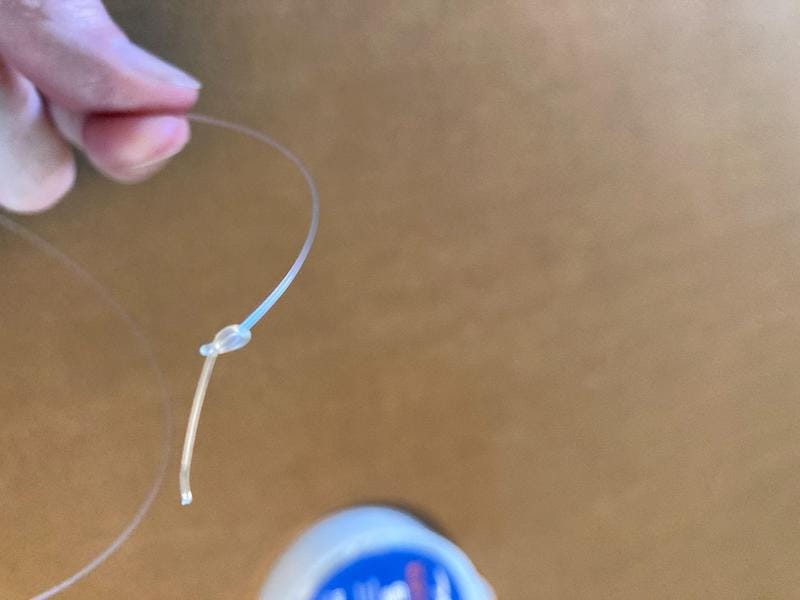
2. Feed the knotted end of your ukulele string through the hole on your ukulele bridge. Make sure to keep light tension on the string as you bring it to the headstock of your ukulele
3. Feed the other end of the ukulele string through the ukulele tuner at the top of your ukulele. Make sure that you at least extend the string to the very top of the neck to ensure that the string can wrap around the tuner at least 8-10 times.
4. The first time when you turn the tuning knobs, you want to make sure that the longer part of the string goes above the string on the neck of the instrument. On its next pass and from then on, you will want to make sure this string goes below the string on the neck. You can use a ukulele/guitar string winder to speed up this process but you will want to only go to the pitch it will end up at. It can help to have another ukulele around to have a reference pitch.
5. Lastly, once you have the string on either use your hands or a string winder to tune the string up to pitch. If you have another ukulele nearby (that’s close to being in-tune) that can help to speed up this process. Tuning most Aquila strings is pretty simple and requires little attention compared to fluorocarbon strings.
6. Lastly, repeat these steps on your next three strings tuning the notes to C, E, A respectively.
7. You will notice that the strings will go flat for a time because the strings will stretch before they fully settle. Therefore, you will need to tune more frequently due to this stretching.
Congratulations! You have just changed your ukulele strings!
When to Change Your Strings
The rate at which you change strings is totally a matter of personal taste but if you notice your strings have notches in them from fret wear or the strings begin to peel you probably will want to change your strings out. You’ll notice that when you begin playing your ukulele with new strings there is a considerable volume difference (louder) than with old strings. The tone quality is usually a bit brighter as well.
To keep the strings in good shape and last longer, it is recommended that you wipe the fretboard of your ukulele with a clean microfiber cloth after each time you play. This will remove dirt, grime, and sweat from the instrument that builds up over time.
Conclusion
Now that you have changed your strings take notes on how much louder your ukulele sings than before. Do you hear any other sound differences? Changing ukulele strings often can help keep your ukulele in top condition, sounding its absolute best. It can also be fun to try out different brands of strings to get different tones from your ukulele.

John Allnutt
Writer & Ukulele TeacherJohn has been teaching music since 2008 and resides in Richmond, Kentucky with his wife Laura and dog Sam. In his spare time he enjoys growing and cooking food, roasting coffee, playing board games, and spreading joy through playing and teaching music.




